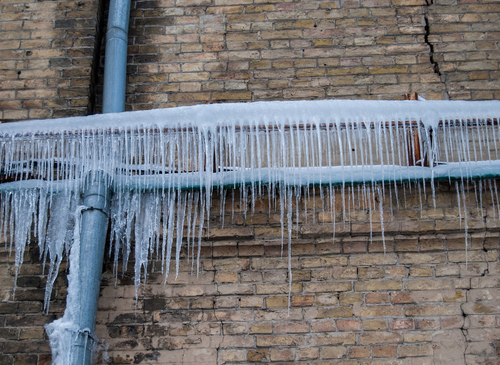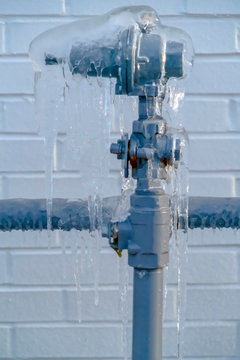Ways to Prevent Frozen Plumbing in Winter: Expert Advice
Ways to Prevent Frozen Plumbing in Winter: Expert Advice
Blog Article
This great article underneath pertaining to How To Avoid Freezing Pipes is fairly captivating. You should check this stuff out.

Cold weather can ruin your plumbing, particularly by freezing pipelines. Right here's how to prevent it from happening and what to do if it does.
Intro
As temperature levels drop, the threat of frozen pipelines increases, possibly leading to pricey repair work and water damages. Recognizing how to stop frozen pipelines is essential for house owners in cool environments.
Recognizing Icy Pipelines
What creates pipes to freeze?
Pipes ice up when revealed to temperature levels listed below 32 ° F (0 ° C) for prolonged periods. As water inside the pipes ices up, it broadens, putting pressure on the pipeline wall surfaces and possibly triggering them to burst.
Dangers and damages
Icy pipelines can cause supply of water interruptions, home damage, and pricey repairs. Ruptured pipes can flooding homes and cause extensive structural damages.
Signs of Frozen Pipes
Identifying frozen pipelines early can stop them from breaking.
Exactly how to determine icy pipes
Seek reduced water circulation from taps, unusual smells or sounds from pipelines, and visible frost on revealed pipelines.
Prevention Tips
Insulating vulnerable pipes
Cover pipes in insulation sleeves or utilize warmth tape to protect them from freezing temperature levels. Concentrate on pipes in unheated or outside locations of the home.
Heating methods
Maintain indoor areas appropriately heated, especially locations with pipes. Open up cupboard doors to allow cozy air to distribute around pipes under sinks.
Securing Outside Pipes
Yard hose pipes and exterior faucets
Separate and drain yard hose pipes before winter months. Mount frost-proof spigots or cover outdoor taps with shielded caps.
What to Do If Your Pipes Freeze
Immediate activities to take
If you suspect icy pipes, keep faucets open up to ease stress as the ice thaws. Use a hairdryer or towels taken in hot water to thaw pipes gradually.
Long-Term Solutions
Structural changes
Take into consideration rerouting pipes far from exterior wall surfaces or unheated locations. Add extra insulation to attics, basements, and crawl spaces.
Updating insulation
Invest in high-grade insulation for pipes, attic rooms, and walls. Appropriate insulation aids keep consistent temperatures and minimizes the threat of icy pipelines.
Final thought
Preventing frozen pipes needs positive procedures and quick actions. By comprehending the causes, signs, and preventive measures, homeowners can shield their plumbing during winter.
5 Ways to Prevent Frozen Pipes
Drain Outdoor Faucets and Disconnect Hoses
First, close the shut-off valve that controls the flow of water in the pipe to your outdoor faucet. Then, head outside to disconnect and drain your hose and open the outdoor faucet to allow the water to completely drain out of the line. Turn off the faucet when done. Finally, head back to the shut-off valve and drain the remaining water inside the pipe into a bucket or container. Additionally, if you have a home irrigation system, you should consider hiring an expert to clear the system of water each year.
Insulate Pipes
One of the best and most cost-effective methods for preventing frozen water pipes is to wrap your pipes with insulation. This is especially important for areas in your home that aren’t exposed to heat, such as an attic. We suggest using foam sleeves, which can typically be found at your local hardware store.
Keep Heat Running at 65
Your pipes are located inside your walls, and the temperature there is much colder than the rest of the house. To prevent your pipes from freezing, The Insurance Information Institute suggests that you keep your home heated to at least 65 degrees, even when traveling. You may want to invest in smart devices that can keep an eye on the temperature in your home while you’re away.
Leave Water Dripping
Moving water — even a small trickle — can prevent ice from forming inside your pipes. When freezing temps are imminent, start a drip of water from all faucets that serve exposed pipes. Leaving a few faucets running will also help relieve pressure inside the pipes and help prevent a rupture if the water inside freezes.
Open Cupboard Doors
Warm your kitchen and bathroom pipes by opening cupboards and vanities. You should also leave your interior doors ajar to help warm air circulate evenly throughout your home.

We are very intrigued by Winter Plumbing Precautions: Preventing Frozen Pipes and I hope you enjoyed the entire page. Feel free to take a moment to distribute this blog entry if you enjoyed it. I am grateful for your time. Don't hesitate to visit our site back soon.
See Availability Report this page